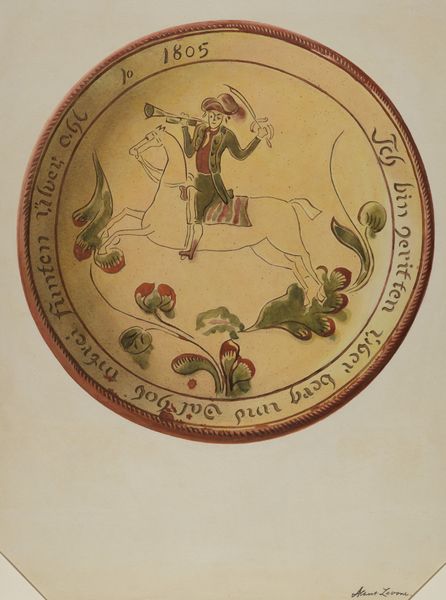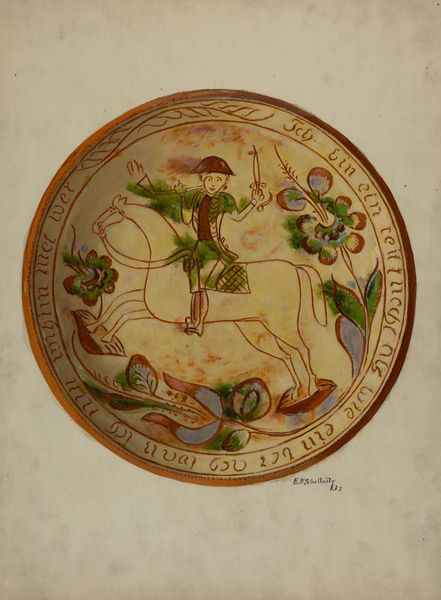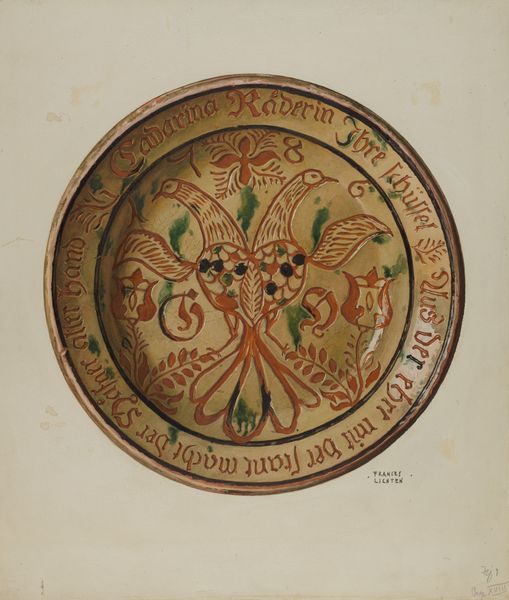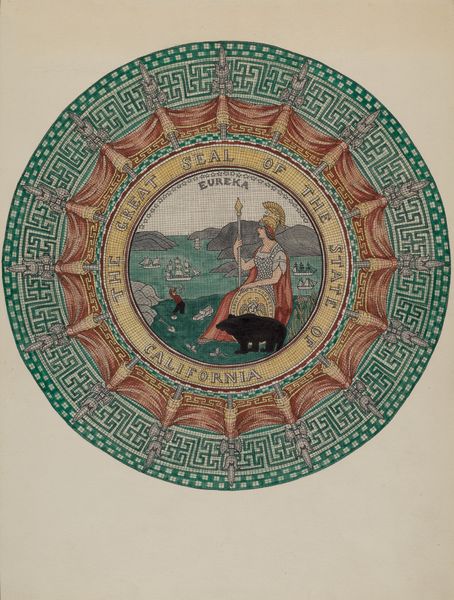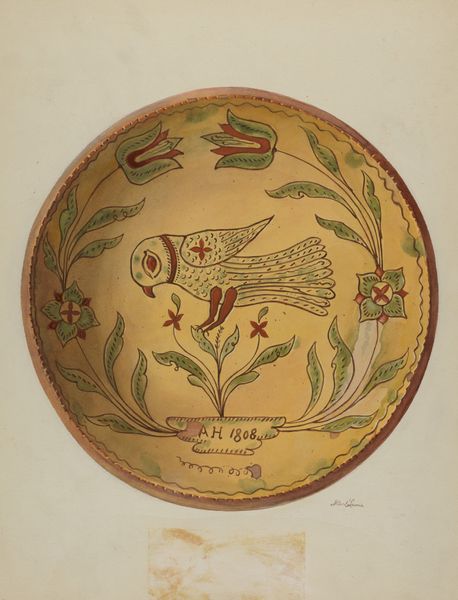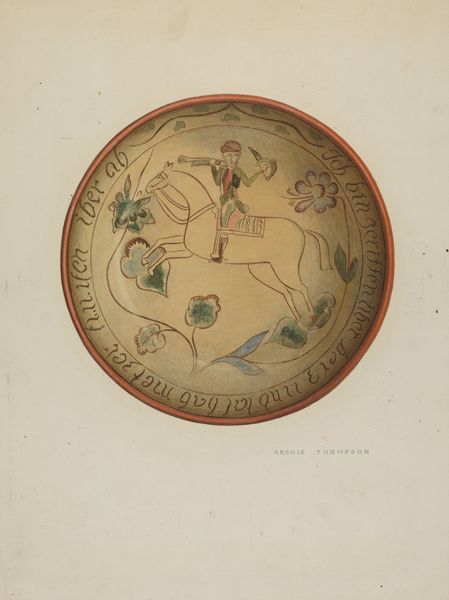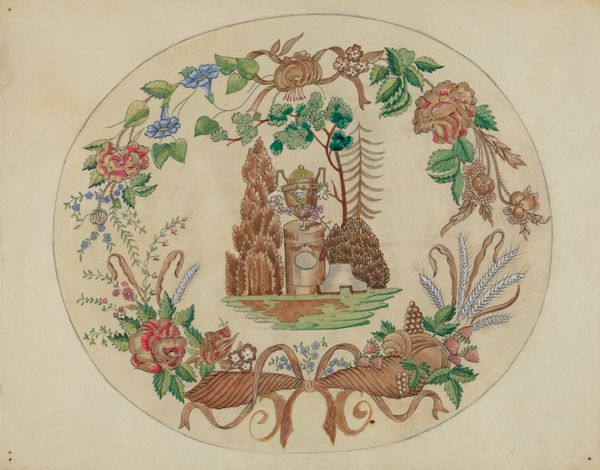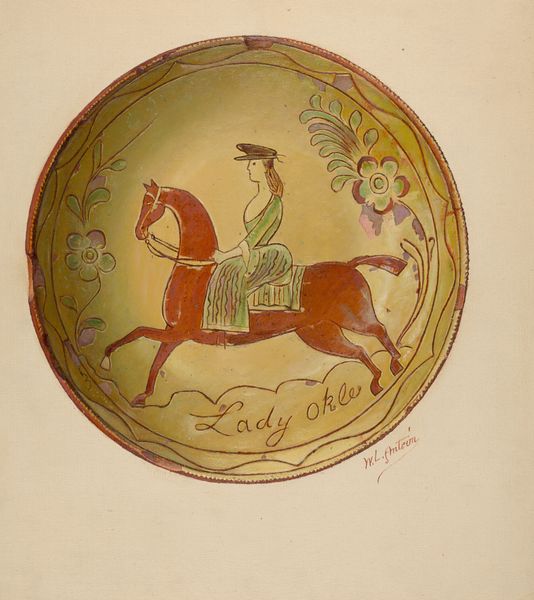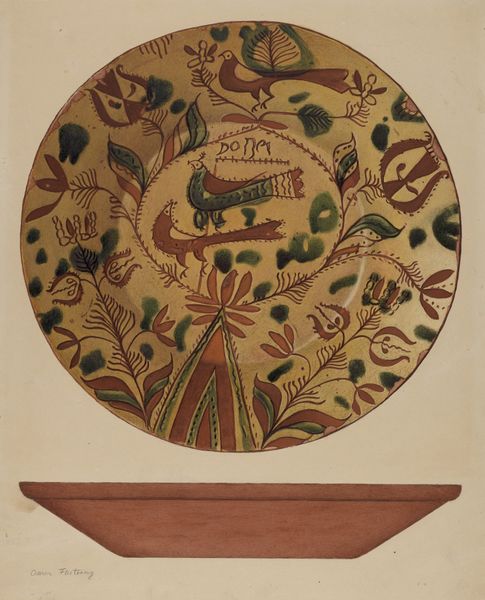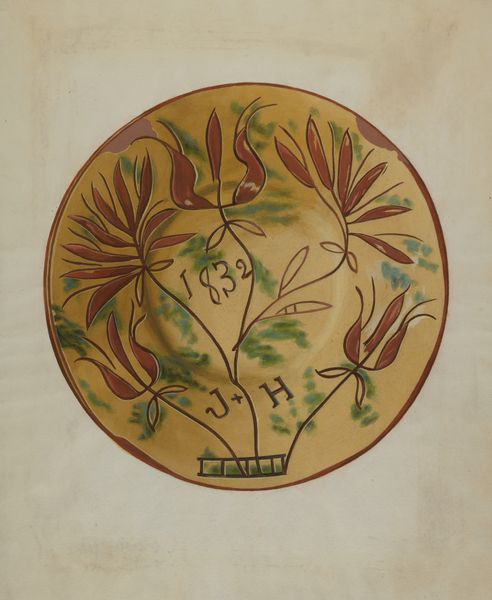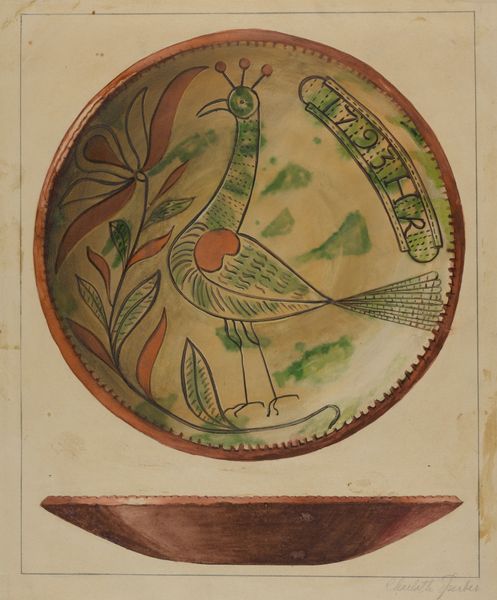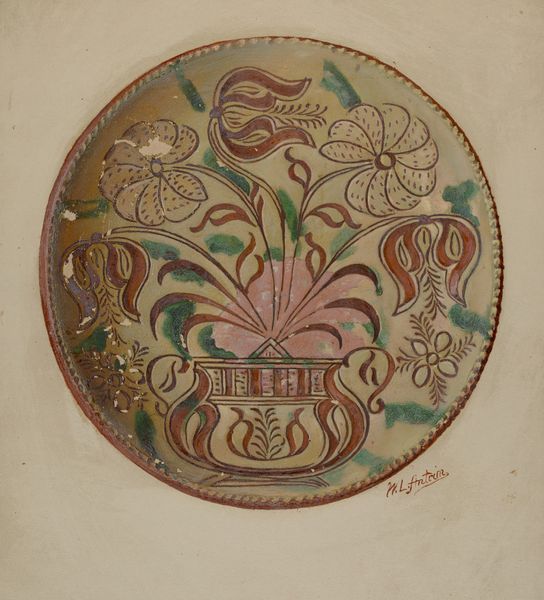
drawing, ceramic, watercolor, earthenware, pendant
#
drawing
#
pottery
#
ceramic
#
watercolor
#
earthenware
#
folk-art
#
earthenware
#
watercolour illustration
#
pendant
Dimensions: overall: 28.8 x 37.2 cm (11 5/16 x 14 5/8 in.)
Copyright: National Gallery of Art: CC0 1.0
Curator: This is a Pa. German Plate, likely created between 1935 and 1942 by an anonymous artist. It's rendered in watercolor and drawing on earthenware, mimicking the look of traditional Pennsylvania German folk pottery. What strikes you about it? Editor: It's…charming in a somewhat subdued way. The colors are muted, and the composition feels both deliberate and a little naive. It looks more like a sketch of pottery than a functional object. Curator: Indeed. These "plates" often served as purely decorative items, expressions of cultural identity. The Pennsylvania Germans, or "Pennsylvania Dutch," as they are sometimes known, maintained distinct traditions. This object reflects their artistic and material culture, speaking to questions of migration and cultural preservation. Editor: The rider is certainly central to the design and suggests themes of masculinity or even dominance. The materials chosen for the piece – the earthenware base and watercolour paint – contribute to its unpretentious appearance. These are common, readily available resources; not inherently valuable, but rendered special by the artist’s touch and the cultural symbolism of the plate form itself. I am curious about what it means when artists depict commodities as folk-art. Is it supposed to transform an item’s perception from daily use to something precious, something nostalgic? Curator: Precisely. It evokes questions about how communities forge identities through material objects and the stories those objects tell across generations. In addition, the gendered and raced implications are also important; it is not a coincidence that these works were made during an increase in xenophobia, nationalism, and traditionalist views of gender. It’s not merely “charming,” it is embedded in an ideological perspective! Editor: Interesting! Thinking about the materials more critically allows me to move beyond aesthetics and into the realm of historical inquiry. What the object signifies really relies on material history and modes of production. Curator: And further…the reproduction of Pennsylvania German "folk-art" also happened at a specific historical juncture, raising questions about nostalgia, cultural identity, and the ways in which we narrate our pasts and potential futures. Editor: Looking closely, I’m now aware of the subtle imperfections. They emphasize the hand-made character, which in turn highlights labor, artistry, and a particular cultural legacy embedded in its making. Curator: Absolutely. By understanding this artwork in its socio-political context, it opens us up to larger conversations about identity, labor, and representation, going far beyond the surface. Editor: This object offers so many different entry points. Analyzing the materiality provides crucial context into folk traditions and can reshape our understanding of both past and present material cultures. Thank you!
Comments
No comments
Be the first to comment and join the conversation on the ultimate creative platform.
